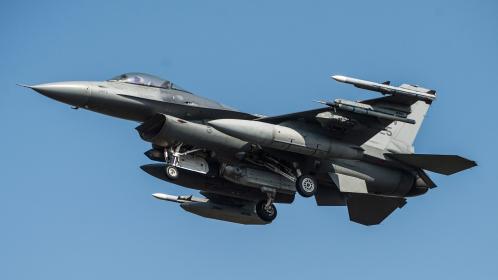
US air force has a new top gun: a computer program
The recent triumph of an artificial intelligence (AI) pilot named Alpha over a retired Air Force colonel highlights the growing role of simulation in military training and fighter jet development. By utilizing simulation, militaries can train pilots, test new aircraft, and enhance existing jets without real-world costs and risks.
Pilots use simulators to fly countless missions and practice dangerous situations rarely encountered in flight. This virtual training sharpens their skills at a fraction of the cost of real flights in terms of fuel, maintenance, and wear and tear on planes. Simulation also enables testing risky combat maneuvers without lives at stake, allowing pilots to push aircraft to their limits and learn capabilities.
Increasingly intelligent AI opponents make simulation training more realistic and effective. Advanced algorithms mimic human behavior, dynamically reacting to pilots’ actions. Battling the formidable AI enemy “Alpha” has already helped pilots improve dogfighting expertise and decision-making to prevail in actual combat.
Simulation plays a huge role in designing fighter jets. Engineers use simulators to test out new controls, sensors, aerodynamics, and performance in a virtual world first. This helps them find any problems early on so they can fix them and make the jet prototypes better without having to build them physically right away. This saves a lot of money because they need fewer real test flights.
Simulations also gather a ton of data about how well virtual planes perform in different missions. They collect data on things like how the engine responds, how much aviation oil the plane uses, how sensitive the controls are, and how effective the countermeasures are. This helps make military aircraft even better. They don’t have to go through as many physical design changes, upgrades happen faster, and the planes get better using what they’ve learned virtually.
Military forces also use simulations to practice for potential future battles. By running pretend war scenarios with advanced simulators, planners can figure out the best planes to use, the right weapons, attack plans, and even how to use drones in battle. These pretend battles help them get ready for real conflicts before they happen.
The benefits of simulation training are not limited to a single country. In fact, countries like the United Kingdom, India, and France have also incorporated this training method into their respective air forces. By utilizing advanced simulators and AI technologies, these countries are able to provide their pilots with realistic and effective training experiences. This enables them to enhance their skills, improve decision-making abilities, and prepare for potential future battles in a safe and controlled environment. Through simulation, these air forces can revolutionize their military air power and stay at the forefront of technological advancements in warfare.
In summary, simulation training prepares pilots for victory through regular practice in perilous simulated situations. Virtual development and testing also lead to more survivable, lethal fighter jets integrated with the latest advances. Plus staged sim wars shape winning strategies using fighters. As artificial intelligence improves battle simulations, air forces gain transformative capabilities through virtual experience rather than real-world losses. Simulation is truly revolutionizing military air power.




